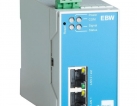9359
Belgium, Brussels Capital Region, Brussels - view exact locationProduct Information
Order volume from: On request
Delivery terms: Pickup
Description
Actran VibroAcoustics is a comprehensive and powerful simulation software designed specifically for the vibro-acoustic industry. It offers a wide range of features and capabilities to help engineers, researchers, and teachers tackle complex vibro-acoustic design challenges.
Built on top of Actran Acoustics and utilizing Free Field Technologies' finite and infinite element library, Actran VibroAcoustics provides a rich selection of elements, materials, boundary conditions, solution schemes, and solvers. This ensures that users have access to a diverse set of tools to address even the most demanding vibro-acoustic problems.
One of the key strengths of Actran is its extensive material library, which includes conventional materials for acoustic and visco-elastic media, as well as specialized models for porous or incompressible media, composite materials, and active components such as piezo-electric ceramics. These materials can be combined within a single model to achieve highly realistic and accurate results.
Actran also allows users to import a modal basis from most structural FEA codes, providing a convenient and seamless way to represent the structural model within the software.
When constructing a vibro-acoustic model in Actran, users can apply a wide range of boundary conditions, including acoustic, dynamic, and kinematic conditions. The software also provides options for more physical excitations, such as diffuse sound fields and turbulent boundary layers, allowing users to simulate real-world working conditions.
Actran also offers the unique capability to combine AeroAcoustics and VibroAcoustics, making it possible to model complex aero-vibro-acoustic problems with ease.
The software provides a variety of solution schemes, including coupled or uncoupled models in physical or modal coordinates, in both frequency and time domains. With highly efficient linear equation solvers and parallel processing capabilities, Actran is the preferred solution for solving large-scale industrial problems, particularly in design optimization processes.
Actran VibroAcoustics finds application in various industries. In the automotive sector, it can be used to address noise-related issues in powertrains, intakes, exhausts, passenger compartments, trims, seats, hoses, tires, windows, windshields, as well as audio and HVAC systems. In aerospace, it is used to analyze sound transmission through cockpits and fuselages, noise propagation in air distribution systems, response to turbulent boundary layer excitation, and random dynamic response of rocket payloads during takeoff. In the consumer goods industry, Actran is employed in the design and analysis of telephones, headsets, loudspeakers, hearing aid devices, disk drives, washing machines, refrigerators, and cameras. It also has applications in defense, particularly in underwater acoustics and sonar systems.

 Business
Business












